Introduction
Log volumes keep climbing while budgets don’t. In 2025, teams are standardizing on OpenTelemetry, unifying logs, metrics, and traces, and shifting to columnar storage on object stores for speed, flexibility, and lower total cost. This guide compares leading logging and observability platforms across deployment models, cost profiles, performance, and ecosystem fit, highlighting when to choose self‑hosted versus managed, index‑based versus index‑free, and how to plan migrations with minimal risk.
How We Chose?
- OpenTelemetry support and unified telemetry
- Cost model (index overhead, storage/retention)
- Performance (ingest throughput, query latency)
- Deployment options (self‑hosted, managed, hybrid)
- Integrations (agents, k8s, Grafana, SIEM)
- Security/governance (RBAC, SSO/OIDC)
- Maturity/docs/community
At a Glance: Comparison Table
| Tool | Storage | Best For |
|---|---|---|
| Parseable | Index‑free Parquet/Arrow on S3, hot‑tier cache | Unified observability platform with low TCO |
| Elasticsearch (ELK/Elastic Obs.) | Indexed search (inverted index) | Elastic‑standardized shops, text‑search workloads |
| Grafana Loki | Label‑based logs on object store | Grafana/k8s‑first teams |
| Splunk | Indexed search | Large enterprises, SecOps |
| Datadog Logs | Managed pipelines, tiered | All‑in Datadog users |
| Sumo Logic | Managed, tiered | Security/compliance‑heavy |
| Graylog | ES/OpenSearch backend | Cost‑sensitive self‑hosted |
| New Relic | Proprietary | Full-stack observability with APM |
| Axiom | Cloud‑native lake/log analytics | Long retention cloud logging |
| Falcon LogScale (Humio) | Optimized index/search | Security‑driven logging |
Top 10 Logging Tools in 2025
1) Parseable
Unified observability on S3 with index‑free, columnar storage, built in Rust for speed and efficiency.
Strengths:
- Parseable provides a unified observability platform that integrates logs, metrics, and traces, reducing the need for multiple tools.
- Its index-free, columnar storage on S3 ensures cost efficiency and high performance, suitable for large data volumes.
- The Rust-based architecture supports real-time data processing and analysis efficiently.
- OpenTelemetry-native support allows for seamless integration with existing telemetry setups.
- The platform's self-hosted nature offers full control over data and infrastructure, appealing to organizations with strict compliance requirements.
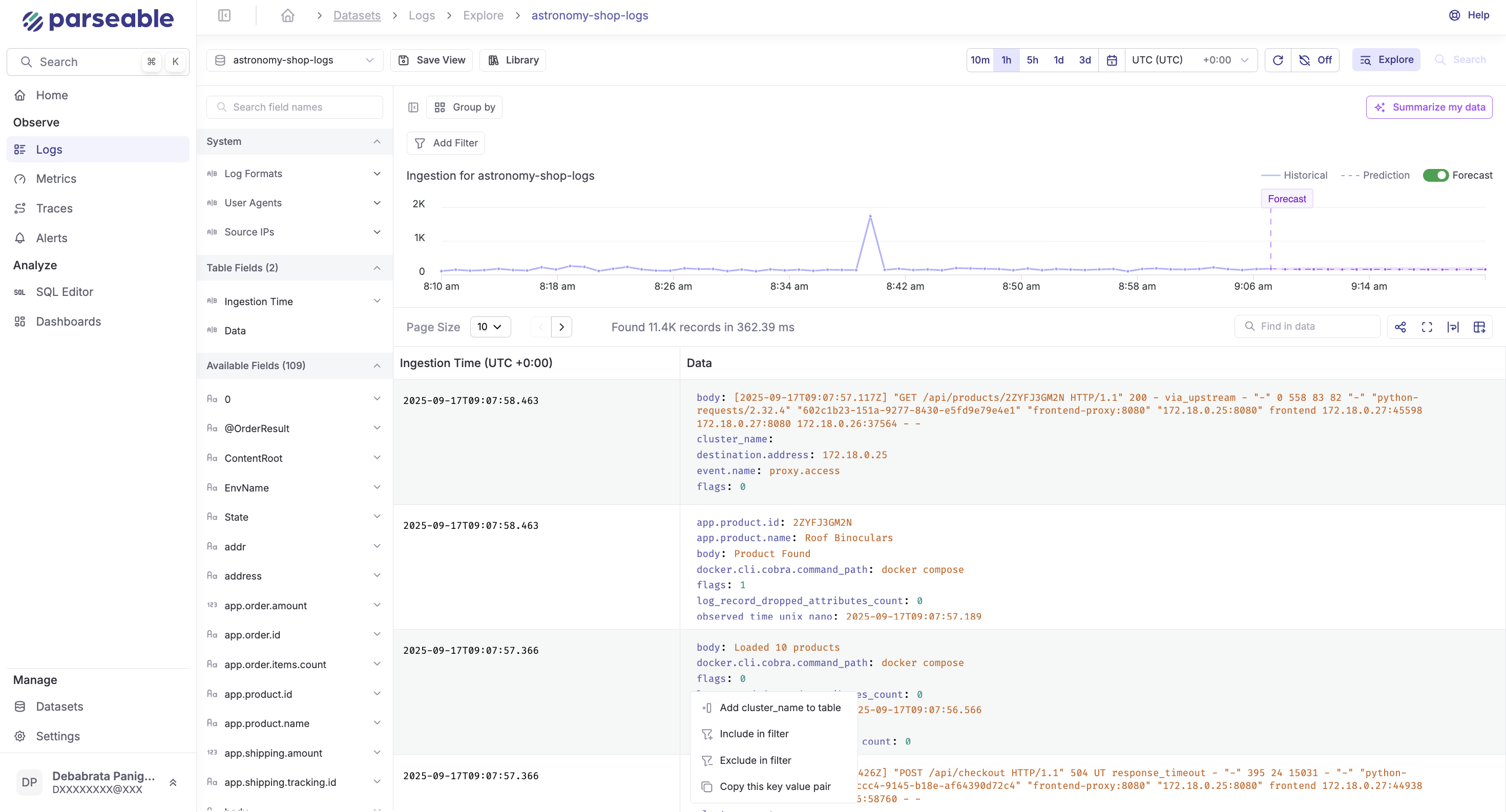
Best for:
- Organizations seeking a unified observability platform with minimal overhead.
- Teams looking for a cost-effective solution with low total cost of ownership (TCO).
- Environments requiring high scalability and performance.
- Businesses aiming to consolidate observability tools into a single platform.
- Those who prioritize open-source solutions with strong community support.

Why it leads in 2025?
- OpenTelemetry‑native ingestion and SQL queries: OTLP/HTTP + JSON endpoints for logs/metrics with ready‑to‑use collector configs (docs, blog).
- Storage designed for cost and speed: Parquet/Arrow on object storage with “Smart Cache” hot‑tier on SSD/NVMe for recent data (docs).
- Everything you need, self‑hosted: Prism UI, Grafana data source, alerts, dashboards; RBAC and OIDC (docs).
- Kubernetes‑native: HA cluster deploy with separate ingestors/queriers via Helm (docs).
Integrations (guides)
Ideal for: Teams consolidating ELK/Loki or repatriating from SaaS; long retention on S3/minio with full data ownership.
2) Elasticsearch
Strengths:
- Elasticsearch offers a robust search capability with its mature indexing and querying features, which are highly optimized for text search.
- The Kibana ecosystem provides an extensive suite of visualization tools and dashboards, enhancing the ability to analyze and interpret log data.
- Additionally, Elasticsearch's integration with SIEM and APM add-ons makes it a versatile choice for security and performance monitoring.
Tradeoffs:
- The platform requires careful management of index and shard operations, which can introduce operational overhead.
- This complexity can lead to increased costs, especially when aiming for long data retention periods, as the storage and processing demands grow.
Best for:
- Organizations that have standardized on Elastic solutions and prioritize advanced text search capabilities will find Elasticsearch particularly beneficial.
- It is well-suited for environments where detailed text analysis and visualization are critical, such as in security operations and performance monitoring scenarios.
3) Grafana Loki
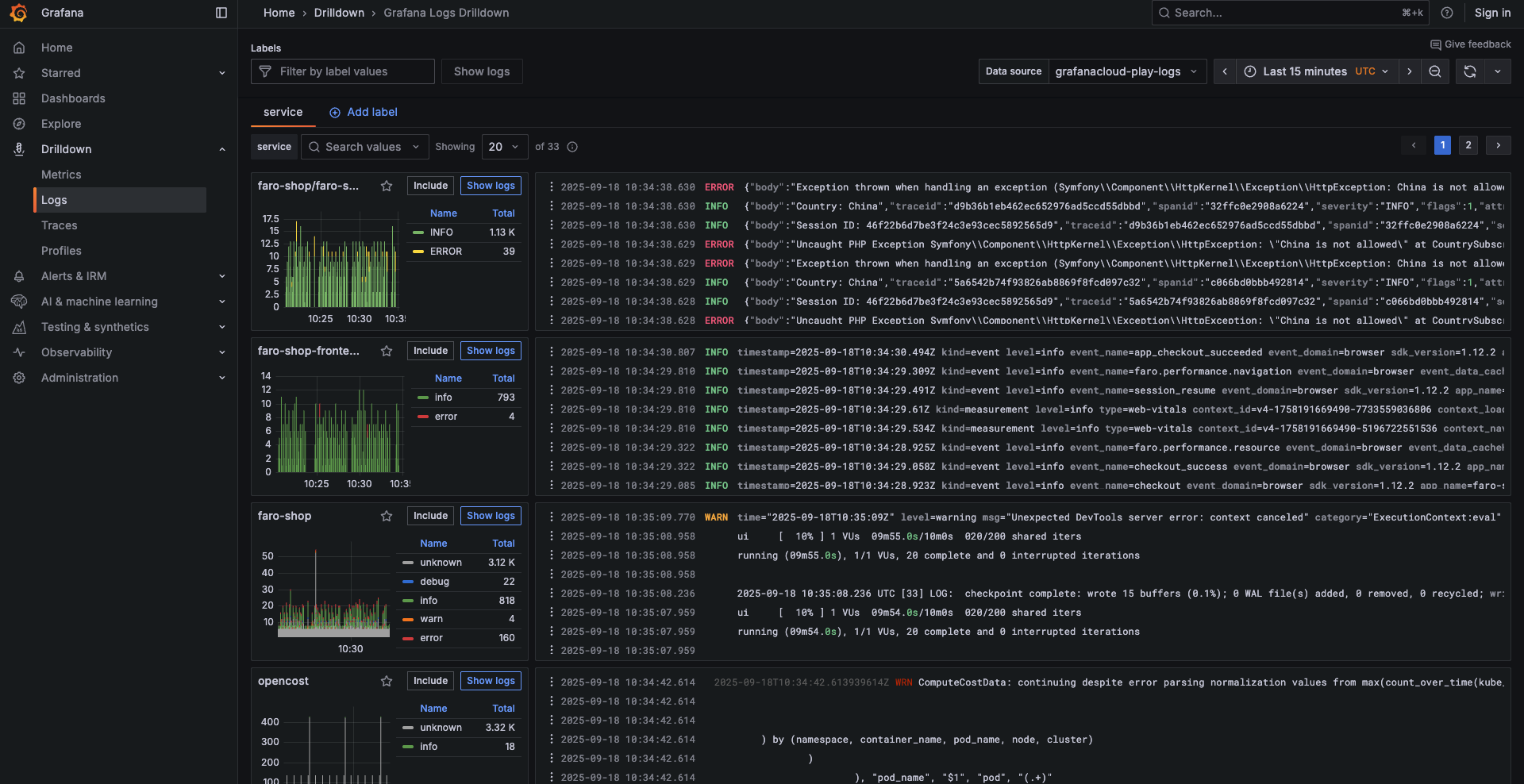
Strengths:
- Grafana Loki is a horizontally scalable, open-source log aggregation system that is designed to be simple to deploy and operate.
- It is built on top of the open-source Loki project and provides a modern, cloud-native architecture that is optimized for performance and scalability.
Tradeoffs:
- LogQL query language has a learning curve compared to full SQL or Lucene syntax.
- Limited full-text search capabilities compared to indexed solutions like Elasticsearch.
- Performance can degrade with high cardinality labels if not properly managed.
Best for:
- Grafana-centric teams who are heavily invested in the Grafana ecosystem and require seamless integration with Grafana dashboards and visualization tools.
- Kubernetes-heavy environments where a cloud-native, scalable log aggregation solution is critical.
- Teams that prioritize flexibility and scalability in their logging infrastructure and need a system that can easily grow with their needs.
4) Splunk
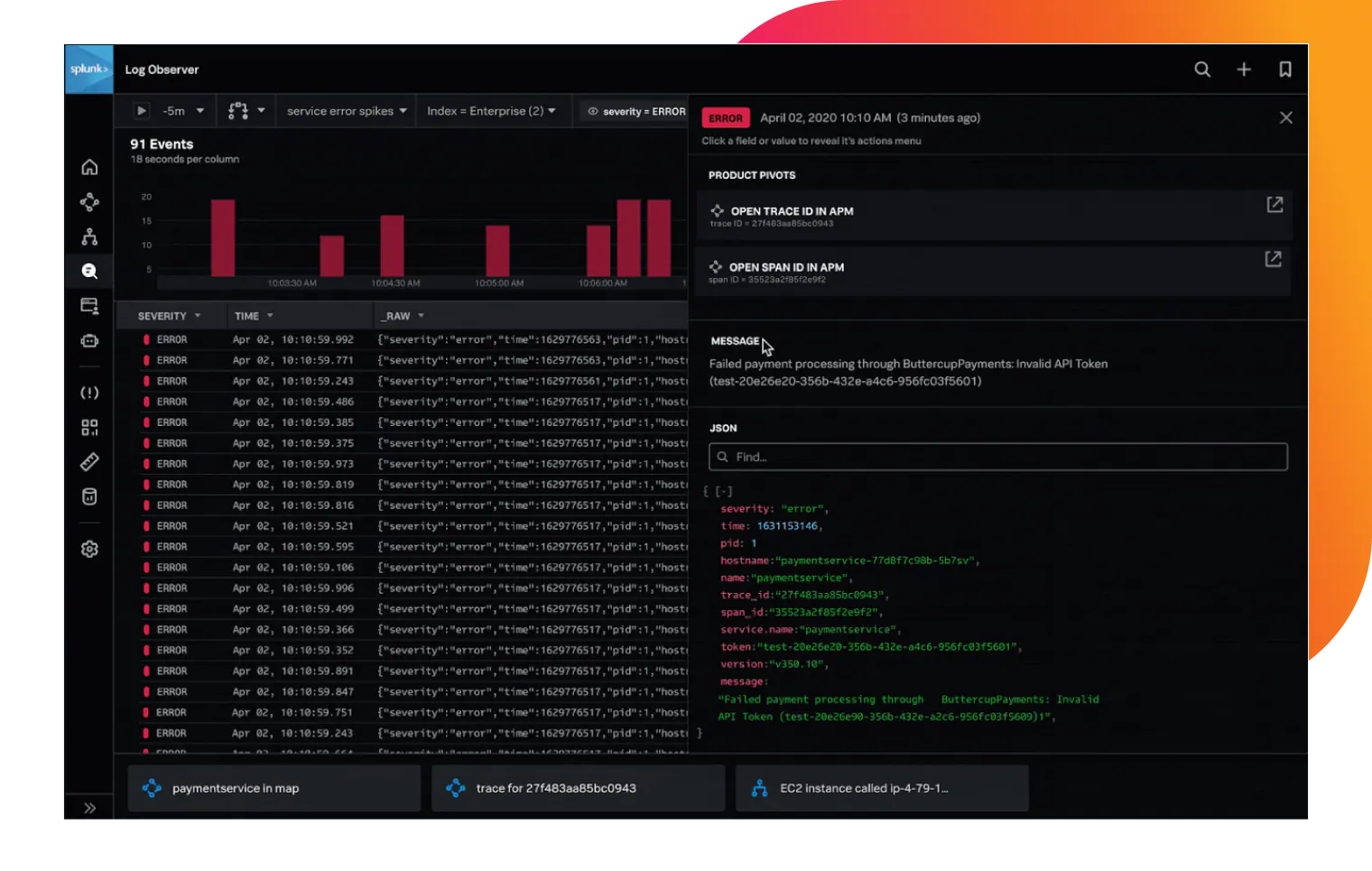
Strengths:
- Industry-leading search and analytics capabilities with powerful SPL (Search Processing Language).
- Comprehensive ecosystem with extensive integrations, apps, and marketplace add-ons.
- Strong SIEM capabilities with advanced threat detection and security analytics.
- Enterprise-grade features including role-based access control, audit logging, and compliance tools.
- Proven track record in large-scale deployments across Fortune 500 companies.
Tradeoffs:
- Splunk can become quite expensive as the volume of data ingested and retained increases, which can be a significant consideration for large-scale deployments.
- The platform operates on a proprietary stack, which may limit flexibility and integration with other open-source tools and technologies.
Best for:
- Large enterprises that require a comprehensive solution for consolidating Security Information and Event Management (SIEM) and log analytics.
- Organizations that need robust, real-time monitoring and alerting capabilities, along with advanced data analysis and visualization tools.
- Companies with the budget to invest in a premium solution that offers extensive features and support for complex IT environments.
5) Datadog Logs
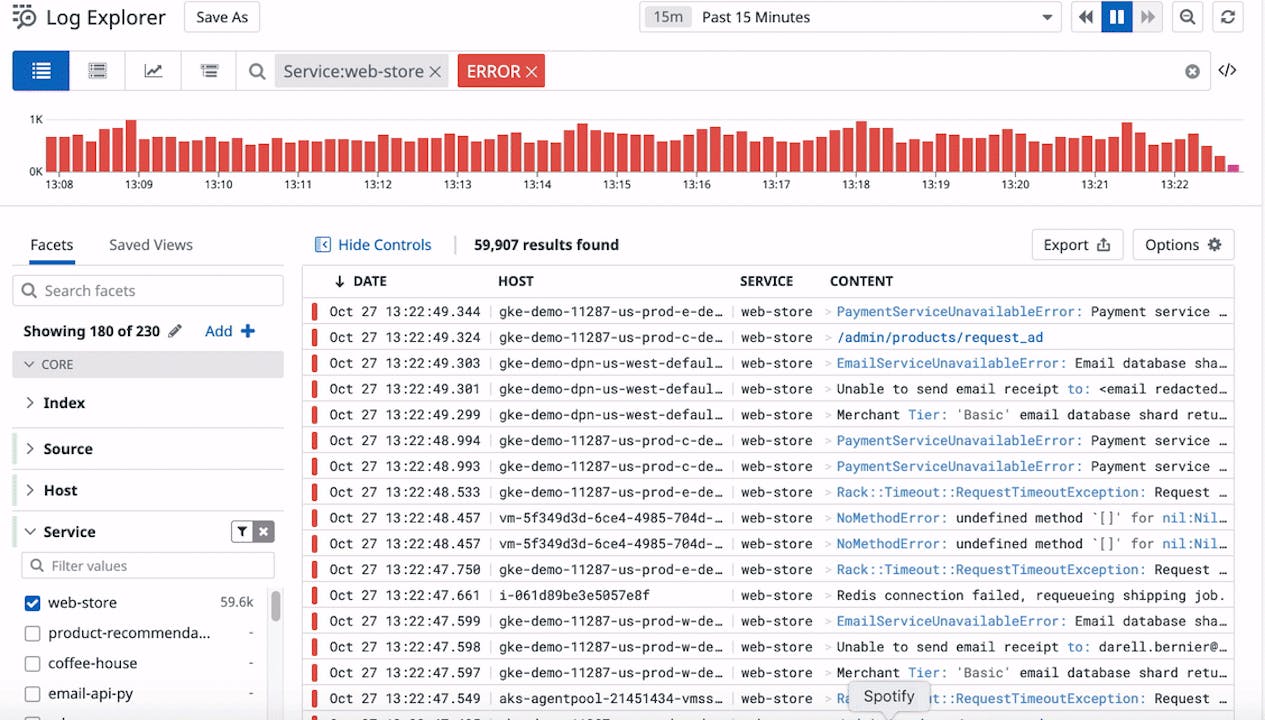
Strengths:
- Unified platform combining logs, metrics, traces, and APM in a single pane of glass.
- Extensive out-of-the-box integrations with 600+ technologies and cloud services.
- Powerful correlation between logs and other telemetry data for faster troubleshooting.
- Advanced machine learning for anomaly detection and predictive analytics.
- User-friendly interface with customizable dashboards and collaborative features.
Tradeoffs:
- As the volume of logs increases, the cost of using Datadog can rise significantly, which may be a concern for some organizations.
- The platform's reliance on a SaaS model can lead to vendor lock-in, limiting flexibility to switch providers or integrate with other systems.
Best for:
- Teams that are heavily invested in the Datadog ecosystem and benefit from its integrated suite of tools for monitoring, logging, and analytics.
- Organizations that prioritize ease of use and want a comprehensive, cloud-based solution for observability without managing infrastructure.
- Companies that value the ability to quickly deploy and scale their monitoring solutions with minimal setup.
6) Sumo Logic
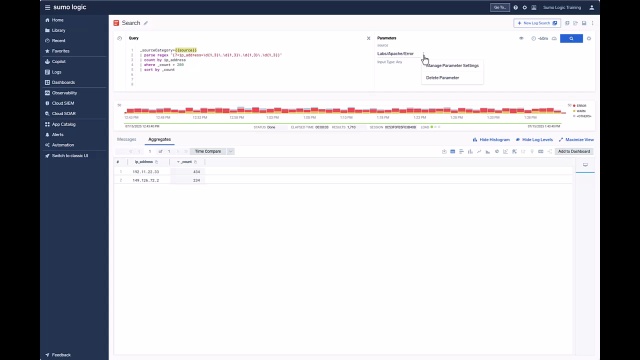
Strengths:
- Cloud-native architecture built for modern, distributed applications and microservices.
- Strong security and compliance features with SOC 2, HIPAA, and PCI DSS certifications.
- Advanced analytics with machine learning-powered insights and threat intelligence.
- Flexible data tier management for cost optimization across hot, warm, and cold storage.
- Comprehensive audit and compliance reporting capabilities.
Tradeoffs:
- The platform's reliance on a SaaS model can lead to vendor lock-in, limiting flexibility to switch providers or integrate with other systems.
- Data residency concerns may be a consideration for organizations with specific compliance requirements or data sovereignty needs.
Best for:
- Regulated organizations that require managed security and log management capabilities.
- Teams that prioritize ease of use and want a comprehensive, cloud-based solution for observability without managing infrastructure.
- Companies that value the ability to quickly deploy and scale their monitoring solutions with minimal setup.
7) Graylog
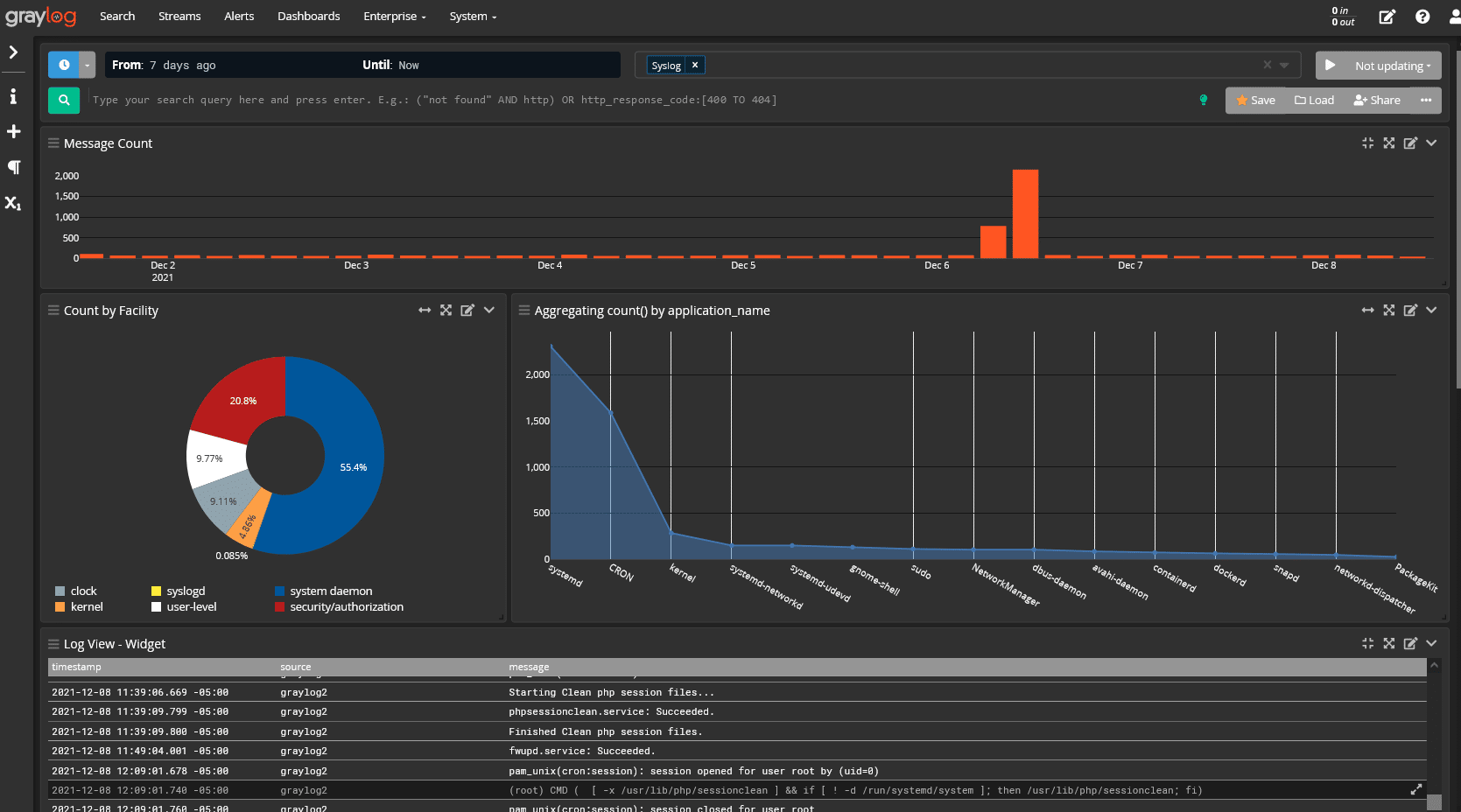
Strengths:
- Open-source with a strong community and flexible deployment options.
- Built on Elasticsearch/OpenSearch backend, providing powerful search capabilities.
- Cost-effective alternative to commercial solutions with self-hosted deployment.
- Intuitive web interface with customizable dashboards and alerting.
Tradeoffs:
- Graylog requires significant effort in scaling and tuning, which can be a challenge for organizations without dedicated resources for infrastructure management.
- Some of the advanced features are gated behind premium offerings, which may limit access for users relying solely on the open-source version.
Best for:
- Organizations that are cost-sensitive and prefer a self-hosted solution to maintain control over their data and infrastructure.
- Teams that have the technical expertise to manage and optimize their logging infrastructure independently.
- Companies looking for a flexible, open-source platform that can be customized to fit specific needs without incurring high costs.
8) New Relic
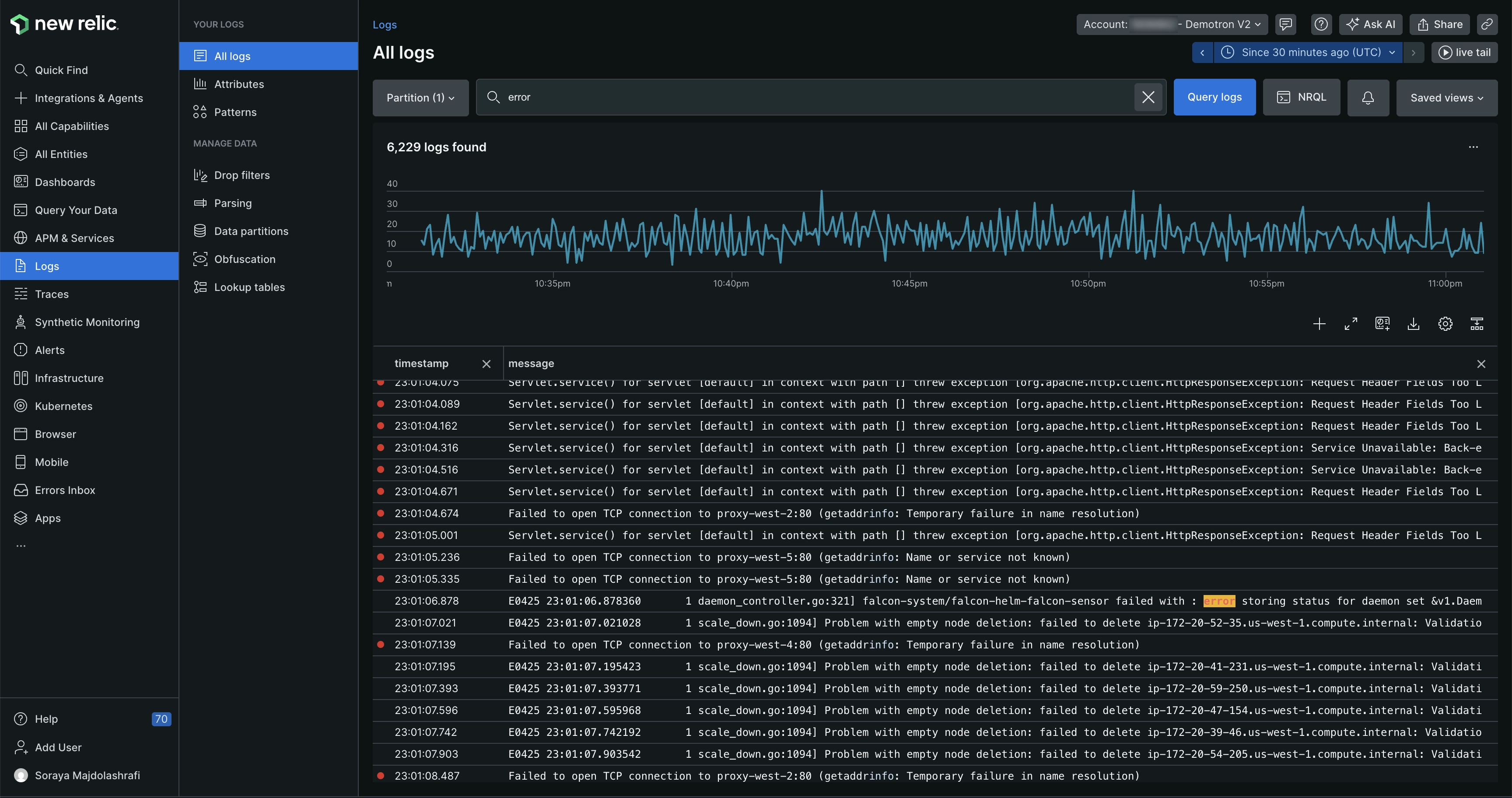
Strengths:
- New Relic is a comprehensive observability platform that provides real-time insights into application performance, infrastructure, and customer experience.
- It offers a wide range of features including distributed tracing, APM, infrastructure monitoring, and synthetic monitoring, making it ideal for full-stack observability.
Tradeoffs:
- Pricing can be a concern for smaller teams; the platform's extensive features may require a learning curve.
Best for:
Organizations looking for a robust, all-in-one observability solution with strong APM capabilities.
9) Axiom
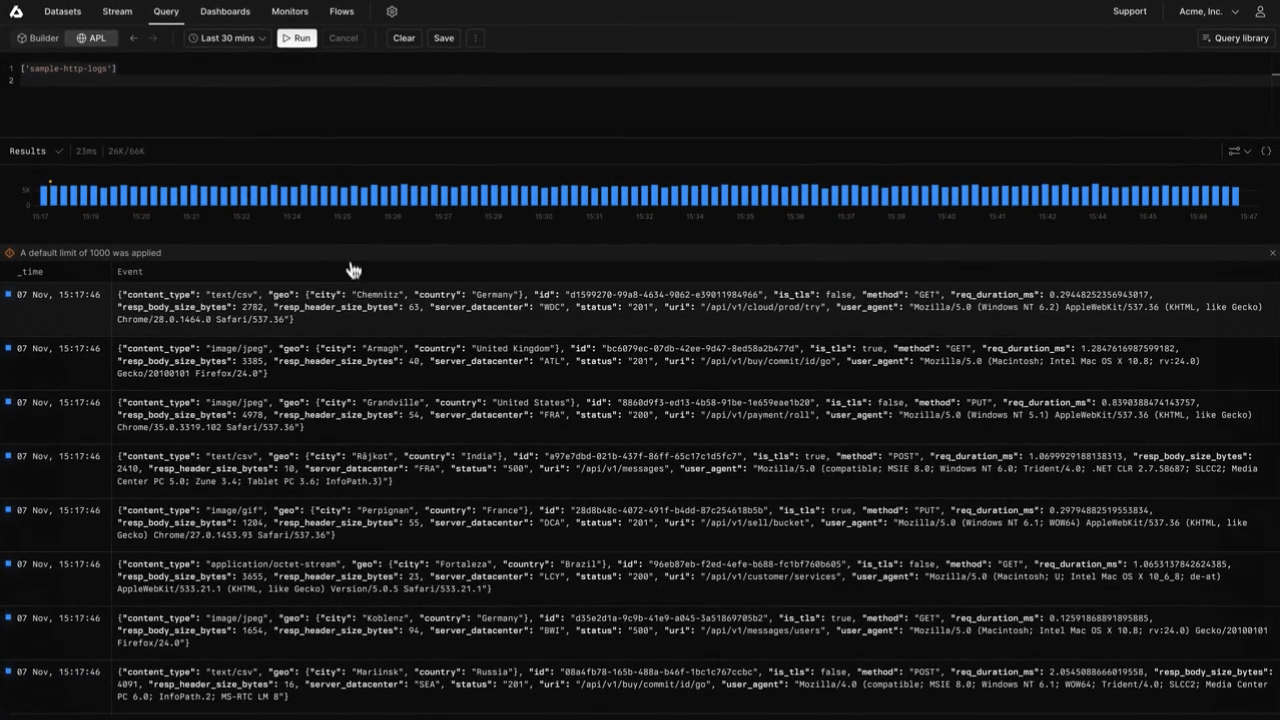
Strengths:
- Serverless architecture with automatic scaling and no infrastructure management.
- Optimized for long-term retention with cost-effective storage pricing.
- Fast query performance across large datasets with columnar storage.
- Developer-friendly with modern APIs and integrations.
Tradeoffs:
- Axiom's SaaS-centric model may not be suitable for organizations that prefer on-premise solutions or have strict data residency requirements.
- The platform uses proprietary query semantics, which can present a learning curve for users familiar with more standard query languages.
Best for:
- SaaS buyers who prioritize retention economics and are looking for a cost-effective solution for long-term log storage.
- Organizations that need a scalable, cloud-based platform with strong data analysis capabilities.
- Companies that value ease of integration with existing cloud infrastructure and services.
10) Crowdstrike Falcon LogScale (Humio)
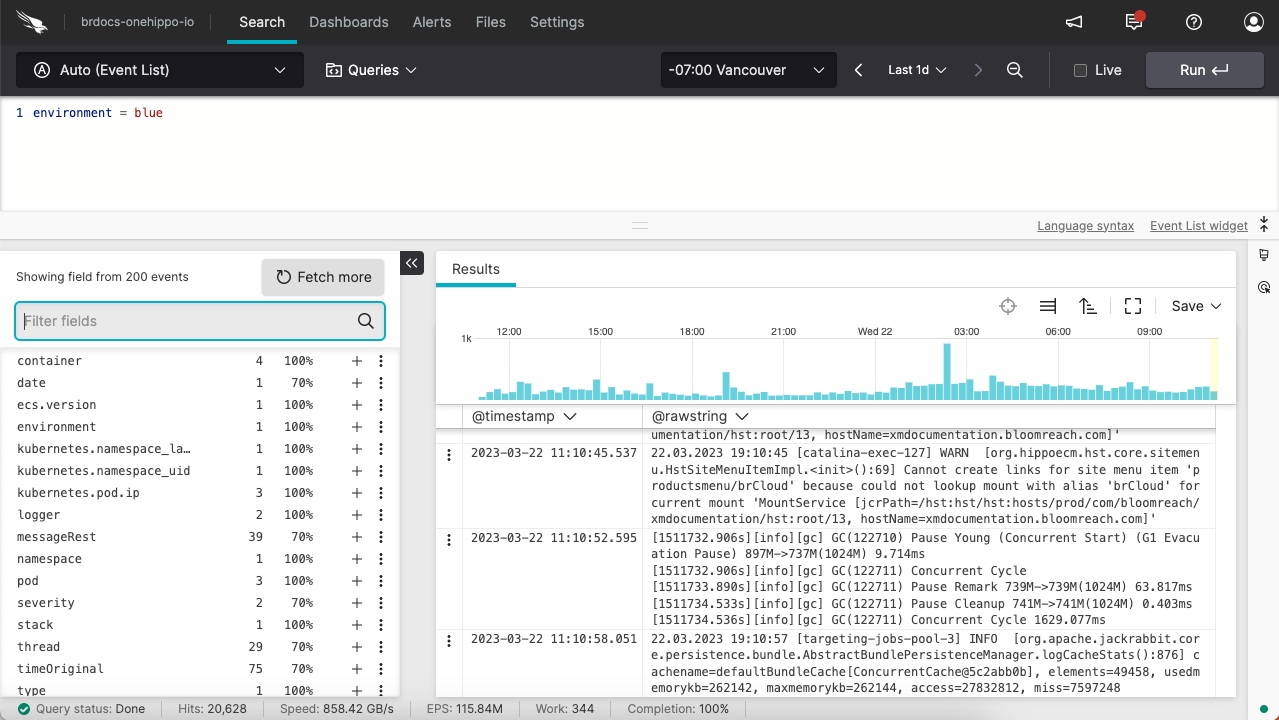
Strengths:
- High-performance log ingestion and search optimized for security use cases.
- Real-time streaming and live tail capabilities for immediate threat detection.
- Efficient compression and storage reducing infrastructure costs.
- Strong integration with CrowdStrike's security ecosystem.
Tradeoffs:
- Crowdstrike Falcon LogScale operates under a licensing model that may require significant investment, particularly for larger deployments or organizations with extensive logging needs.
- The platform's focus on a specific vendor ecosystem can limit integration flexibility with other tools or systems outside of its preferred environment.
Best for:
- Security Operations (SecOps) teams that require a specialized tool for log management and analysis, with strong capabilities in real-time monitoring and alerting.
- Organizations that are already invested in the Crowdstrike ecosystem and can leverage Falcon LogScale's integration with other Crowdstrike products.
- Companies that need a robust solution for handling large volumes of log data with an emphasis on security and compliance.
How to Choose the Right Tool?
- Self‑hosted, OTel‑native, S3‑first with low TCO: Parseable
- Deep text search and existing ELK estate: Elasticsearch
- Grafana/k8s‑first: Loki
- Managed suite: Datadog, Sumo Logic, New Relic
- Security‑led enterprise: Splunk, Falcon LogScale
FAQs
-
How to send data to Parseable along with other tools?
- Dual ship first
- Fluent Bit HTTP output to Parseable with
- Or OTLP/HTTP to /v1/logs with stream headers
- Dual ship first
-
How to recreate dashboards/alerts in Parseable?
- Use Prism
-
How to do optional backfill?
- Tail key sources for recent data; keep legacy clusters as cold history
-
How to do cutover?
- Switch alert webhooks, finalize retention, update runbooks
See Parseable in Action
- Try the live demo: https://demo.parseable.com
- Quickstart (binary): https://www.parseable.com/docs/quickstart/binary
- Kubernetes HA (Helm): https://www.parseable.com/docs/installation/distributed/k8s-helm
- Talk to us (Enterprise, predictable pricing): https://www.parseable.com/pricing
- Enterprise features: https://www.parseable.com/docs/enterprise

